|
Posted: 2/27/2010 12:54:48 PM EDT
[Last Edit: -Apocalypto-]
This is my submission for the project proposed by VA-gunnut, this is a work in progress and i'll add to it as I can. Most of it was obtained from internet sources so don't jump on me if something isn't 100% correct, just let me know and i'll update it...thanks
link to original thread. http://www.ar15.com/forums/topic.html?b=4&f=64&t=126460 The AK-47 is a selective fire, gas operated 7.62mm assault rifle, first developed in the Soviet Union by Mikhail Kalashnikov. 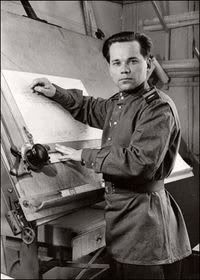

Earlier Rifles The Fedorov Avtomat was an early assault rifle designed by Vladimir Grigoryevich Fedorov and made in Russia in 1916. 
The weapon saw combat in World War I in 1916 , the Russian Civil War, and later in the Winter War with Finland in 1940. The Fedorov Avtomat is considered to be an early predecessor to the modern assault rifle, due to its relatively light weight, large detachable magazine, intermediately-powered cartridge and selective fire capabilities. During World War II, the Germans developed an assault rifle, based upon research that showed that most firefights happen at close range, within 300 meters. The power and range of contemporary rifle cartridges was excessive for most small arms firefights. As a result, armies sought a cartridge and rifle combining submachine gun features (large-capacity magazine, selective-fire) with an intermediate-power cartridge effective to 300 meters. To reduce manufacturing costs, the 7.92x57mm Mauser cartridge case was shortened, the result of which was the lighter 7.92x33mm Kurz. 
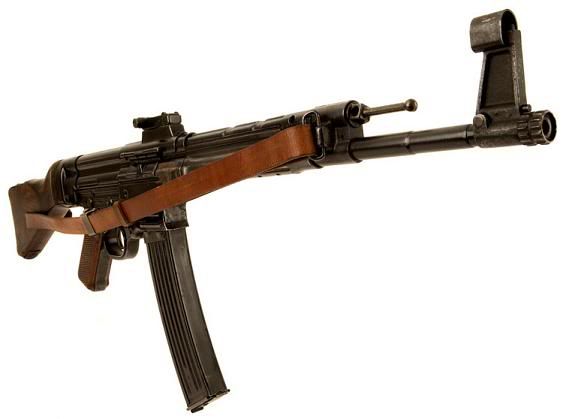
The resulting rifle was the the Sturmgewehr 44 (StG44) Towards the end of the war, they fielded this weapon against the Soviets; the experience deeply influenced Soviet military doctrine in the post-war years Mikhail Kalashnikov began his career as a weapon designer while in a hospital after he was shot in the shoulder during the Battle of Bryansk. After tinkering with a sub-machine gun design, he entered a competition for a new weapon that would chamber the 7.62x41mm cartridge developed by Elisarov and Semin in 1943 (the 7.62x41mm cartridge predated the current 7.62x39mm M1943). A particular requirement of the competition was the reliability of the firearm in the muddy, wet, and frozen conditions of the Soviet frontline. Kalashnikov designed a carbine, strongly influenced by the American M1 Garand, that lost out to the Simonov design that later became the SKS semi-automatic carbine. At the same time, the Soviet Army was interested in developing a true assault rifle employing a shortened M1943 round. The first such weapon was presented by Sudayev in 1944; however in trials it was found to be too heavy. A new design competition was held two years later where Kalashnikov and his design team submitted an entry. It was a gas-operated rifle which had a breech-block mechanism similar to his 1944 carbine, and a curved 30-round magazine. The designation AK-47 stands for Kalashnikov automatic rifle, model of 1947. It is therefore also known as Avtomat Kalashnikova (or simply 'AK'), Kalashnikov or Russian jargon Kalash). Design work on the AK began in 1944. In 1946 a version of the rifle, the AK-46, was presented for official military trials, and a year later the fixed stock version was introduced into service with select units of the Red Army. AK-46 
An early development of the design was the AKS-47 (S—Skladnoy or "folding"), which differed in being equipped with an underfolding metal shoulder stock. 
The AK-47 was officially accepted by the Soviet Armed Forces in 1949 and used by the majority of the member states of the former Warsaw Pact. 1st model AK-47 
2nd model AK-47 
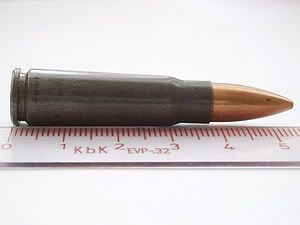
The AK-47 fires the 7.62x39mm cartridge which produces significant wounding (including remote wounding effects known as hydrostatic shock) in cases where the bullet tumbles and fragments in tissue, but which produces relatively minor wounds in cases where the bullet exits before beginning to yaw. Kalashnikov's rifles (codenamed AK-1 and -2) proved to be reliable and the gun was accepted to second round of competition along with designs by A.A Demetev and F. Bulkin. In late 1946, as the guns were being tested, one of Kalashnikov's assistants, Aleksandr Zaytsev, suggested a major redesign of AK-1, particularly to improve reliability. At first, Kalashnikov was reluctant, given that their rifle had already fared better than its competitors; however eventually Zaytsev managed to persuade Kalashnikov. The new rifle was produced for a second round of firing tests and field trials. There, Kalashnikov assault rifle model 1947 proved to be simple and reliable, under a wide range of conditions with convenient handling characteristics. In 1949 it was therefore adopted by the Soviet Army as '7.62mm Kalashnikov assault rifle. 
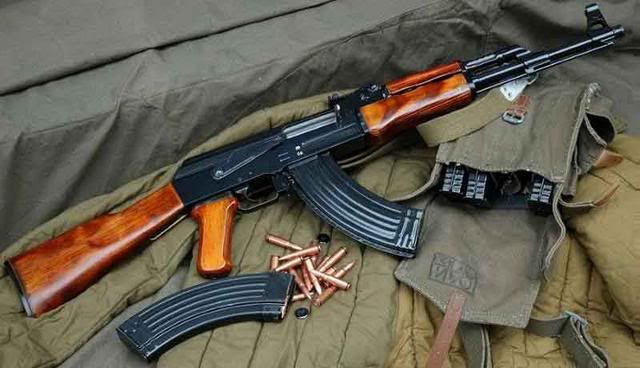
The AK-47 is best described as a hybrid of previous rifle technology innovations: the trigger, double locking lugs and unlocking raceway of the M1 Garand/M1 carbine, the safety mechanism of the John Browning designed Remington Model 8 rifle and the gas system and layout of the Sturmgewehr 44. Kalashnikov's team had access to all of these weapons and had no need to "reinvent the wheel", though he denied that his design was based on the German Sturmgewehr 44 assault rifle. Kalashnikov himself observed: "A lot of [Soviet Army soldiers] ask me how one can become a constructor, and how new weaponry is designed. These are very difficult questions. Each designer seems to have his own paths, his own successes and failures. But one thing is clear: before attempting to create something new, it is vital to have a good appreciation of everything that already exists in this field. I myself have had many experiences confirming this to be so." Receiver development history There were many difficulties during the initial phase of production. The first production models had stamped sheet metal receivers. Difficulties were encountered in welding the guide and ejector rails, causing high rejection rates. Instead of halting production, a heavy machined receiver was substituted for the sheet metal receiver. milled receiver 
This was a more costly process, but the use of machined receivers accelerated production as tooling and labor for the earlier Mosin-Nagant rifle's machined receiver were easily adapted. Partly because of these problems, the Soviets were not able to distribute large numbers of the new rifle to soldiers until 1956. During this time, production of the interim SKS rifle continued. 
Once manufacturing difficulties had been overcome, a redesigned version designated the AKM (M for "modernized" or "upgraded" — in Russian: (Автомат Калашникова Модернизированный [Avtomat Kalashnikova Modernizirovanniy]) was introduced in 1959. stamped receiver 
This new model used a stamped sheet metal receiver and featured a slanted muzzle brake on the end of the barrel to compensate for muzzle rise under recoil. In addition, a hammer retarder was added to prevent the weapon from firing out of battery (without the bolt being fully closed), during rapid or automatic fire. This is also sometimes referred to as a "cyclic rate reducer", or simply "rate reducer", as it also has the effect of reducing the number of rounds fired per minute during automatic fire. It was also roughly one-third lighter than the previous model. Both licensed and unlicensed production of the Kalashnikov weapons abroad were almost exclusively of the AKM variant, partially due to the much easier production of the stamped receiver. This model is the most commonly encountered, having been produced in much greater quantities. All rifles based on the Kalashnikov design are frequently referred to as AK-47s in the West, although this is only correct when applied to rifles based on the original 3 receiver types. In most former Eastern Bloc countries, the weapon is known simply as the "Kalashnikov". 
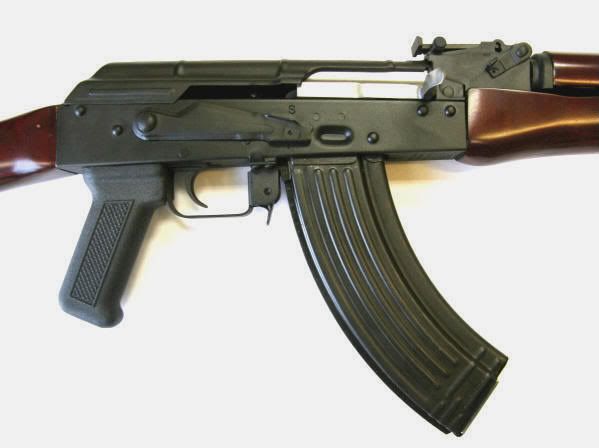
The original AK-47 was one of the first true assault rifles. Even after six decades, due to its durability, low production cost and ease of use, the model and its variants remain the most widely used and popular assault rifles in the world. It has been manufactured in many countries and has seen service with regular armed forces as well as irregular, revolutionary and terrorist organizations worldwide. The AK-47 was also used as a basis for the development of many other types of individual and crew-served firearms. More AK-type rifles have been produced than all other assault rifles combined. 
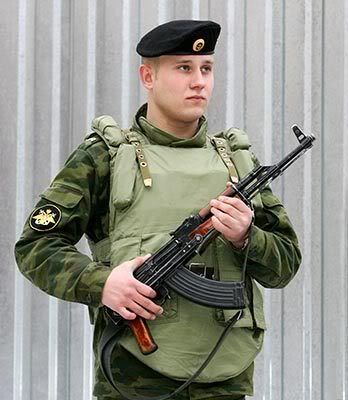
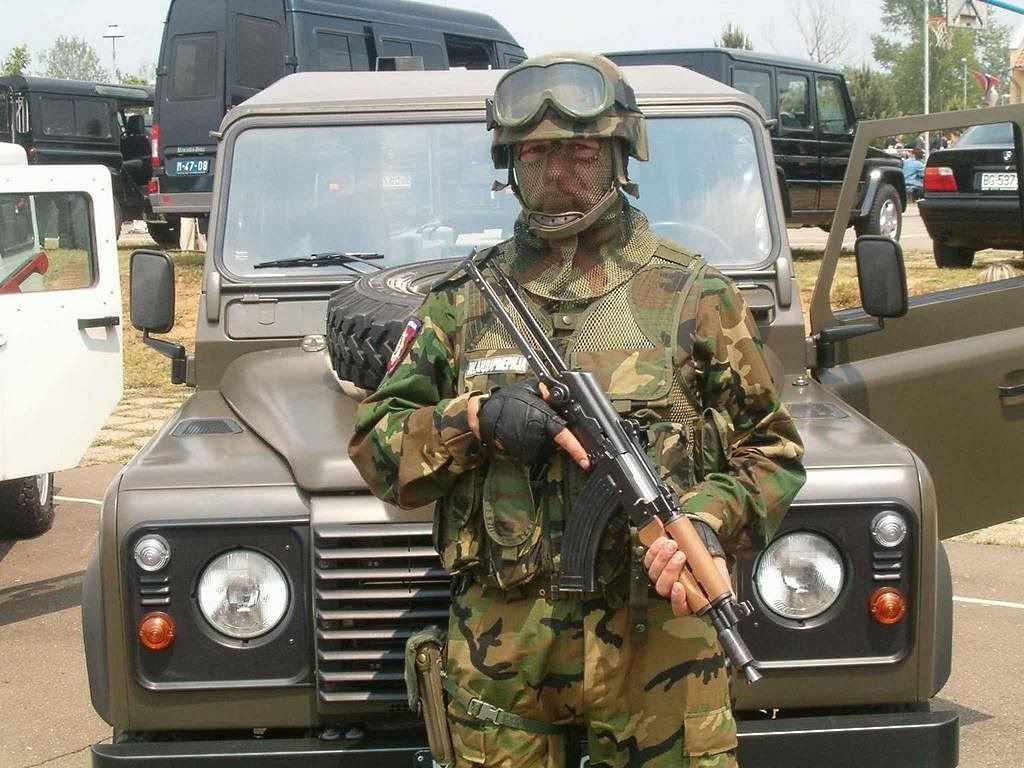
The AK 74 The AK-74 is a 5.45mm assault rifle developed in the early 1970s in the Soviet Union. It was developed from the earlier AKM (itself a refined version of the AK-47) and introduced in 1974. The rifle first saw service with Soviet forces engaged in the Afghanistan conflict. 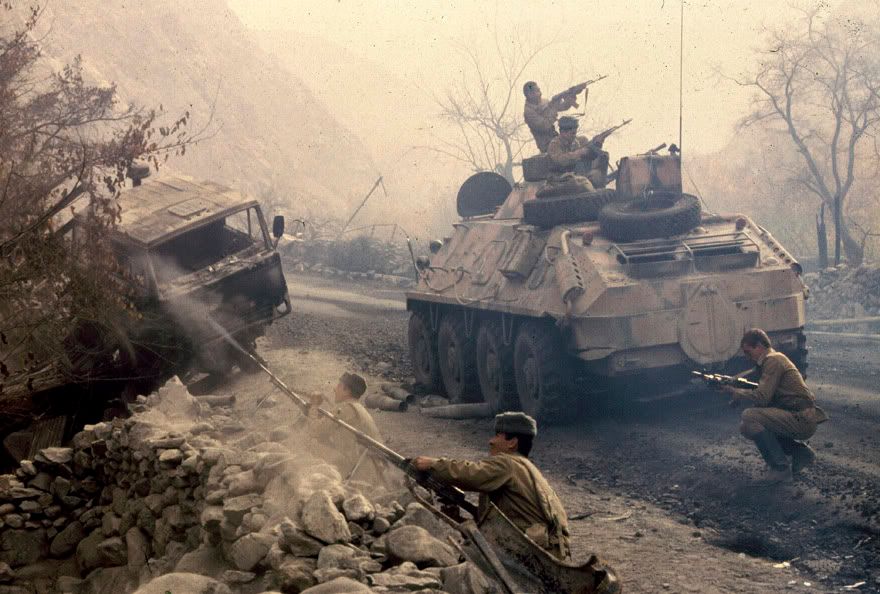
Presently, the rifle continues to be used by the majority of countries of the former USSR. In 1978, the Soviet Union began replacing their AK-47 and AKM rifles with a newer design, the AK-74. This new rifle and cartridge had only started being exported to eastern European nations when the Soviet Union collapsed, drastically slowing production of this and other weapons of the former Soviet bloc. The AK-74 is an adaptation of the 7.62mm AKM assault rifle and features several important design improvements. These modifications were primarily the result of converting the rifle to the intermediate-caliber 5.45x39mm cartridge, in fact, some early models are reported to have been converted AKMs, with the barrel re-sleeved to 5.45x39mm. The result is a more accurate and reliable rifle than the AKM. The AK-74 and AKM share an approximate 50% parts commonality (interchangeable are most often pins, springs and screws). New features The AK-74 was equipped with a new stock, handguard (which retained the AKM-type finger swells) and gas cylinder. The stock has a different shoulder pad than the AKM, which is rubber and serrated for increased traction. In addition, there are weight-reducing lightening cuts on each side of the buttstock. These also function to distinguish externally by sight and touch between the AKM and the AK-74, preventing the accidental loading of the wrong ammunition in the AK-74. The stock, lower handguard and upper heatguard were first manufactured from laminated wood, this later changed to a synthetic plum and then a black-colored polymer. 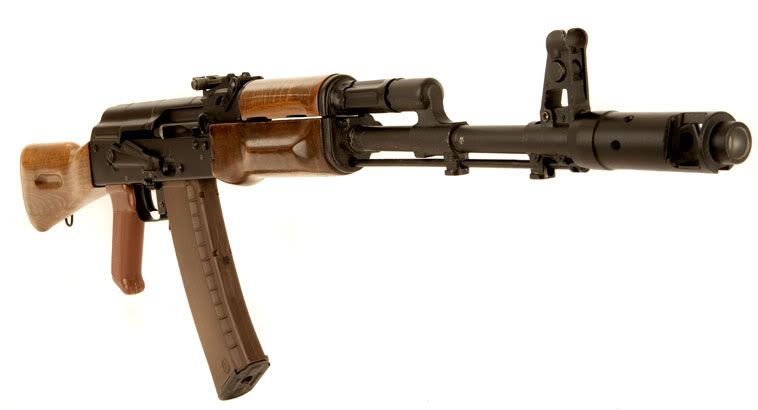
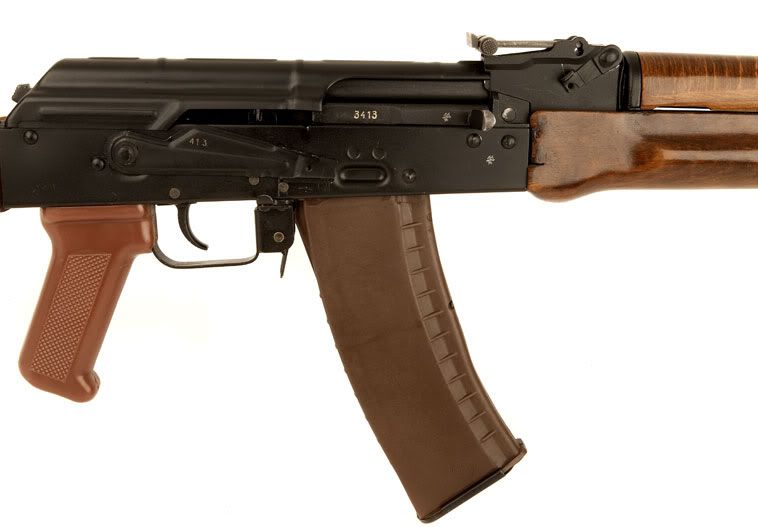
The AK-74 gas tube has a spring washer attached to its rear end designed to retain the gas tube more securely. The lower handguard is fitted with a leaf spring that reduces play in the rifle's lateral axis by keeping the wood tensioned between the receiver and the handguard retainer. The receiver remains nearly identical to that of the AKM; it is a 1 mm (0.04 in) thick sheet steel pressing supported extensively by pins and rivets. The internal guide rails on which the bolt carrier travels are stamped and spot welded to the inside of the receiver housing. Minor changes were made to the front barrel and rear stock trunnions as well as the magazine well. All external metal surfaces are coated with a glossy black enamel. The Soviet 5.45x39mm round was introduced into service in 1974 for use with the new AK-74 assault rifle. It gradually supplemented and then largely replaced the 7.62x39mm round in service. 
|
|
|
This business will get out of control. It will get out of control and we'll be lucky to live through it.
|
|
Nice Job, keep it coming

|
|
|
|
|
That's pretty cool. Keep up the work.
By the way, there's a good documentary book, History and Development of the Kalishnikov, or something thereabouts, that I have had. Zack3g still has it. |
|
|
|
|
I'm working on more pics, and reworking some of the paragraphs that didn't line up just right.
|
|
|
This business will get out of control. It will get out of control and we'll be lucky to live through it.
|
|
Thanks for taking the time to post. Good start...
|
|
|
|
|
Hopefully this will get stickied once you have it formatted and finished. It would be nice to include some pics and history of some of Kalashnikov's prototypes that pre-dated the 47 as well. Just a suggestion and thanks for your effort!
|
|
|
|
|
Originally Posted By 10mm4ever:
Hopefully this will get stickied once you have it formatted and finished. It would be nice to include some pics and history of some of Kalashnikov's prototypes that pre-dated the 47 as well. Just a suggestion and thanks for your effort! If I can find a pic, i'll put in in edit, found one. |
|
|
This business will get out of control. It will get out of control and we'll be lucky to live through it.
|
|
Very well done.
|
|
|
|
|
Was he not asked by the Russian gov to design a machine gun not a Rifle? The saftey settings go, Safe, full auto, then single fire leading one to assume it is first a machine gun then a rifle..
Also what do you mean by "The resultant rifle, the Sturmgewehr 44 (StG44) was not the first" what does resultant mean exactly in this phrase. You may also want to fix the time line. You are jumping back and forth with Mr. K being in the hospital then going back to it. Keep it flowing an in order don't jump back and forth and the finish product will be great. |
|
|
|
|
Originally Posted By MG42––Slayer:
Was he not asked by the Russian gov to design a machine gun not a Rifle? The saftey settings go, Safe, full auto, then single fire leading one to assume it is first a machine gun then a rifle.. The weapon is a select fire rifle. It was intended to be such, not a machine gun. The selector settings are that way because it requires less parts to produce a select fire rifle with the settings in that order, given the design of the fcg. |
|
|
|
|
Originally Posted By MG42––Slayer:
Was he not asked by the Russian gov to design a machine gun not a Rifle? The saftey settings go, Safe, full auto, then single fire leading one to assume it is first a machine gun then a rifle.. Also what do you mean by "The resultant rifle, the Sturmgewehr 44 (StG44) was not the first" what does resultant mean exactly in this phrase. You may also want to fix the time line. You are jumping back and forth with Mr. K being in the hospital then going back to it. Keep it flowing an in order don't jump back and forth and the finish product will be great. edit made to make it less confusing. I'll make some adjustments to the timeline, it's a work in progress. |
|
|
This business will get out of control. It will get out of control and we'll be lucky to live through it.
|
|
You may also want to include a sample pic of of each countries version of the AK, showing and explaining some of the salient differences.
|
|
|
|
|
Originally Posted By POLYTHENEPAM:
Originally Posted By MG42––Slayer:
Was he not asked by the Russian gov to design a machine gun not a Rifle? The saftey settings go, Safe, full auto, then single fire leading one to assume it is first a machine gun then a rifle.. The weapon is a select fire rifle. It was intended to be such, not a machine gun. The selector settings are that way because it requires less parts to produce a select fire rifle with the settings in that order, given the design of the fcg. First time I heard that. |
|
|
|
|
You should add why the Soviet Union decided to change over to the AK74-because the U.S. changed to the 5.56X45 caliber during Vietnam.
We did so because studies of combat from WWII shown whoever could shoot the most bullets in a firefight usually won. 5.56X45 was small compared 7.62X51 NATO, which allowed soldiers to carry more ammo, not to mention 5.56X45 was more controllable during full auto fire. The Soviets post WWII studies came to the same conclusion as the U.S. studies. The U.S. fielding the 5.56X45 caliber in Vietnam influenced the Soviets to change calibers too. Mr. Kalashnikov openly stated being against changing calibers from 7.62X39 to 5.45X39. |
|
|
|
|
Thanks for putting this together. I added a link to the "Read Me First" Announcement on the top of the forum.
|
|
|
Have you visited your Hometown Forum today?
http://www.ar15.com/forums/board.html?b=8 "Site Staff remembers when you could buy a keg of musket balls for $1.75" |
|
Great info!
But ze Germans didn't invent the assault rifle concept, they just coined the name. There were some before this one as well. http://en.wikipedia.org/wiki/Fedorov_Avtomat |
|
|
|
|
Nice read, thx for posting.
|
|
|
Back in the old days , people just died when you shot them, they didnt know you had to shoot them with a super duper woopty friggen doo round-Forum Member arsteve
Professionals argue tactics; amateurs argue caliber. |
|
Originally Posted By suprshootr:
We did so because studies of combat from WWII shown whoever could shoot the most bullets in a firefight usually won. The study you referred to found that aimed shots were no more likely to find their target than were randomly fired shots. It did not make any conclusions corralating the number of shots fired and victory, nor could it. Clearly, there is no way for anyone to sit in an office after the end of a war and determine how many shots the opposing sides fired during a firefight. Those figures are never totaled and recorded by any military organization and even if they were, would not be announced to the opposing side at the conclusion of the fight. Further, the study was flawed. First, it has never been clear how a study of records of wounds received could ever determine whether the person firing at the casualty was aiming or firing randomly. Again, the participants do not make such declarations during or after a fight. Second, experience in RVN showed that the conclusions were wrong. Firing large number of unaimed shots isn't effective and results in running out of ammunition, as any one who has ever been in a firefight would have predicted. My personal belief (after doing some study of the matter) is that the US adopted the 5.56 cartridge because Robert McNamara wanted to save money and for no other reason. I suspect that the Soviets adopted the 5.45 cartridge for the same reason. They just got a better deal because they didn't give up as much effectiveness. |
|
|
|
|
Thanks for the post...Excellent information
|
|
|
|
|
The study you referred to found that aimed shots were no more likely to find their target than were randomly fired shots. It did not make any conclusions corralating the number of shots fired and victory, nor could it.
Clearly, there is no way for anyone to sit in an office after the end of a war and determine how many shots the opposing sides fired during a firefight. Those figures are never totaled and recorded by any military organization and even if they were, would not be announced to the opposing side at the conclusion of the fight. I never said they announced it to the opposing enemy. We just showed up in a proxy war with a new caliber, which in essence, was our announcement. Further, the study was flawed.
First, it has never been clear how a study of records of wounds received could ever determine whether the person firing at the casualty was aiming or firing randomly. Again, the participants do not make such declarations during or after a fight. Second, experience in RVN showed that the conclusions were wrong. Firing large number of unaimed shots isn't effective and results in running out of ammunition, as any one who has ever been in a firefight would have predicted. I agree with some of your statements but a lot of what we are talking about is educated guesses from people who are educated on the subject. My personal belief (after doing some study of the matter) is that the US adopted the 5.56 cartridge because Robert McNamara wanted to save money and for no other reason.
I agree with this, but I don’t think it was the definitive factor. I think a multitude of things were considered, which I should have said that in my original statement. I suspect that the Soviets adopted the 5.45 cartridge for the same reason. They just got a better deal because they didn't give up as much effectiveness
I’m not sure what you mean by effectiveness. If by effectiveness you mean the Soviets didn’t have to change over to an entirely new weapons platform therefore saving more money; I agree. I totally disagree if you mean 5.45 is more effective than 5.56. |
|
|
|
|
I don't want to derail this thread. If you'd like to explore this matter further, start a thread in the ammunition forum.
|
|
|
|
|
Originally Posted By MG42––Slayer:
Was he not asked by the Russian gov to design a machine gun not a Rifle? The saftey settings go, Safe, full auto, then single fire leading one to assume it is first a machine gun then a rifle.. . I always heard that it was done in that order, b/c by doing it in that order, you have the gun in safety. All of a sudden you need to use the gun, so you slam the safety lever down to the bottom and start shooting. This puts you in semi mode first, and you will save more ammo. If you really need full auto, it has to be a slightly more thought out and slow process by it being in the middle of the safety selectors swing, makin git so you only have it in full auto when you really want it and need it in full auto. |
|
|
|
|
Thanks for the post! Interesting read!
|
|
|
|
|
Gold membership generously donated by mac130.
|
Originally Posted By collegeboy:
Thanks for the post! Interesting read! |
|
In the long history of the world, only a few generations have been granted the role of defending freedom in its maximum hour of danger. You are that generation, that is your role, this is that moment.
-Judge Napolitano |
|
How is a fedorov an 'assault' rifle? It's a battle rifle with a detachable magazine.
|
|
|
|
|
Originally Posted By eodinert:
How is a fedorov an 'assault' rifle? It's a battle rifle with a detachable magazine. Some people would define an assault rifle as one that fires from a closed bolt, uses an intermediate power cartridge, has select fire capability and uses a detachable box magazine. Using that definition, it qualifies. |
|
|
|
 Win a FREE Membership!
Win a FREE Membership!
Sign up for the ARFCOM weekly newsletter and be entered to win a free ARFCOM membership. One new winner* is announced every week!
You will receive an email every Friday morning featuring the latest chatter from the hottest topics, breaking news surrounding legislation, as well as exclusive deals only available to ARFCOM email subscribers.
AR15.COM is the world's largest firearm community and is a gathering place for firearm enthusiasts of all types.
From hunters and military members, to competition shooters and general firearm enthusiasts, we welcome anyone who values and respects the way of the firearm.
Subscribe to our monthly Newsletter to receive firearm news, product discounts from your favorite Industry Partners, and more.
Copyright © 1996-2024 AR15.COM LLC. All Rights Reserved.
Any use of this content without express written consent is prohibited.
AR15.Com reserves the right to overwrite or replace any affiliate, commercial, or monetizable links, posted by users, with our own.

